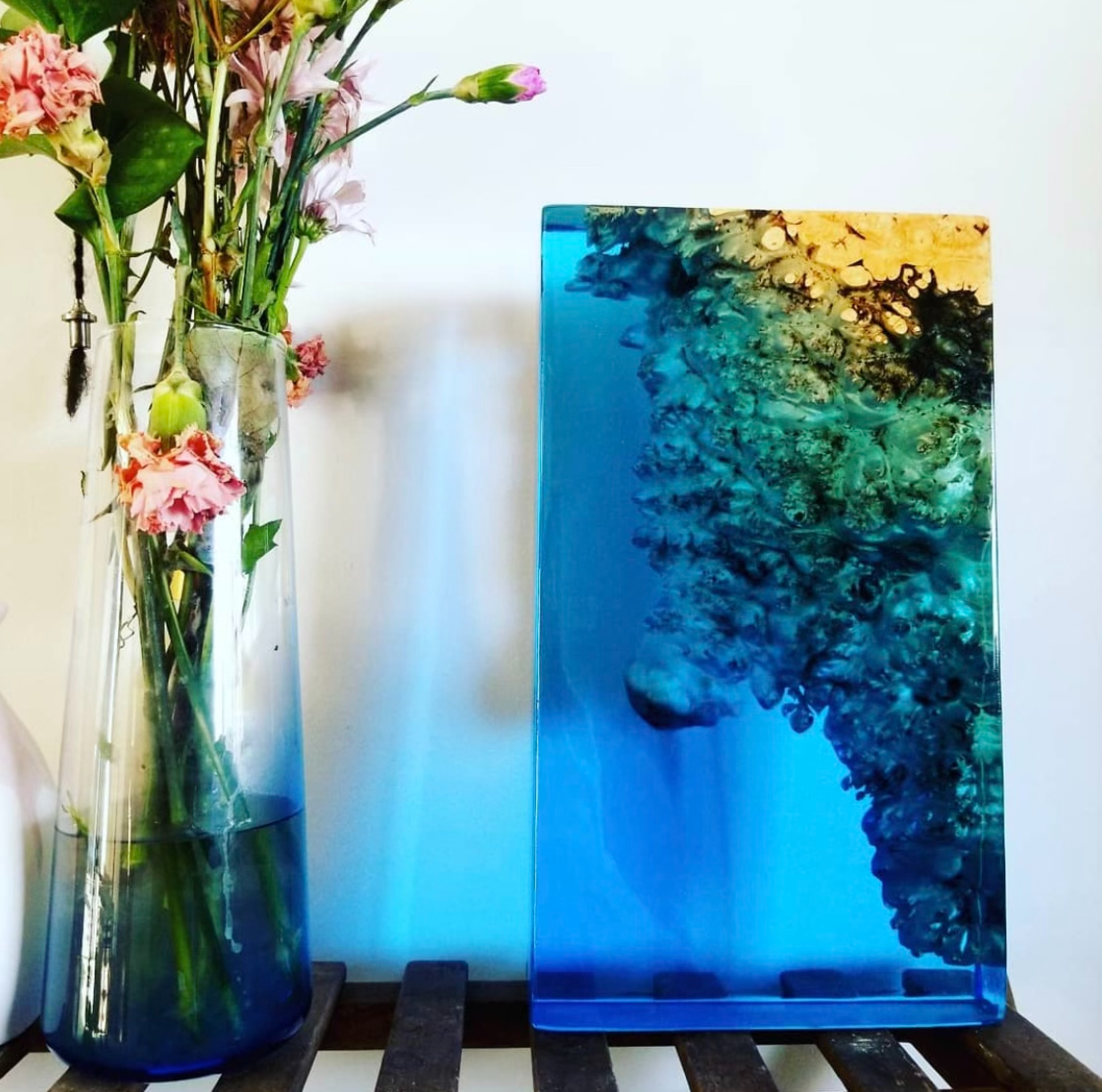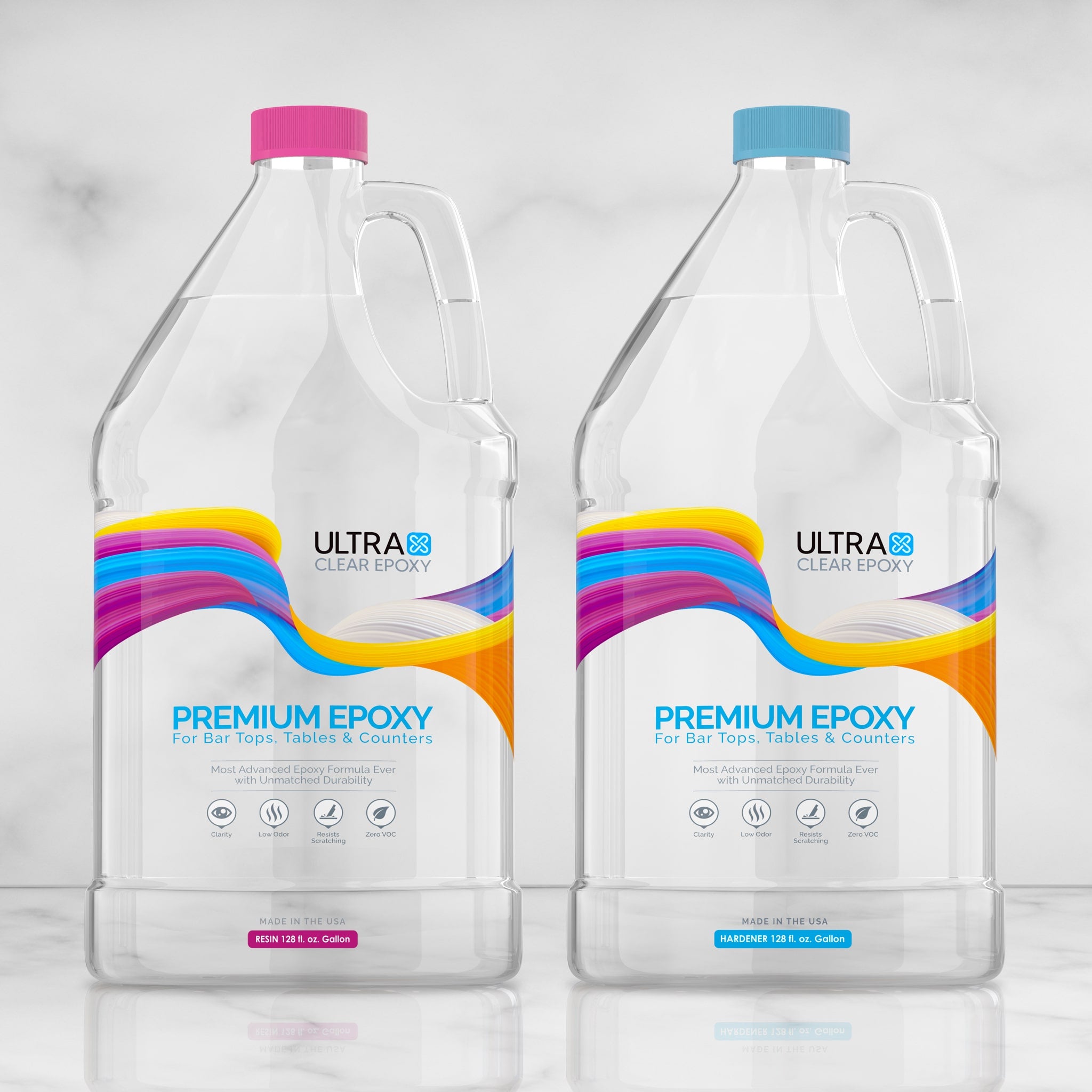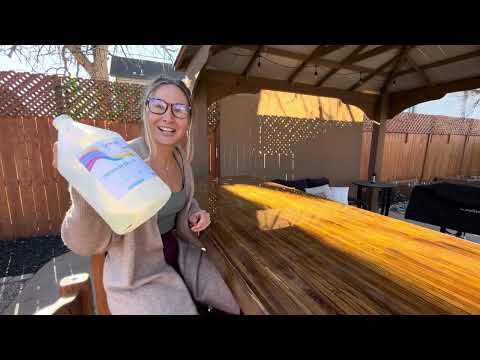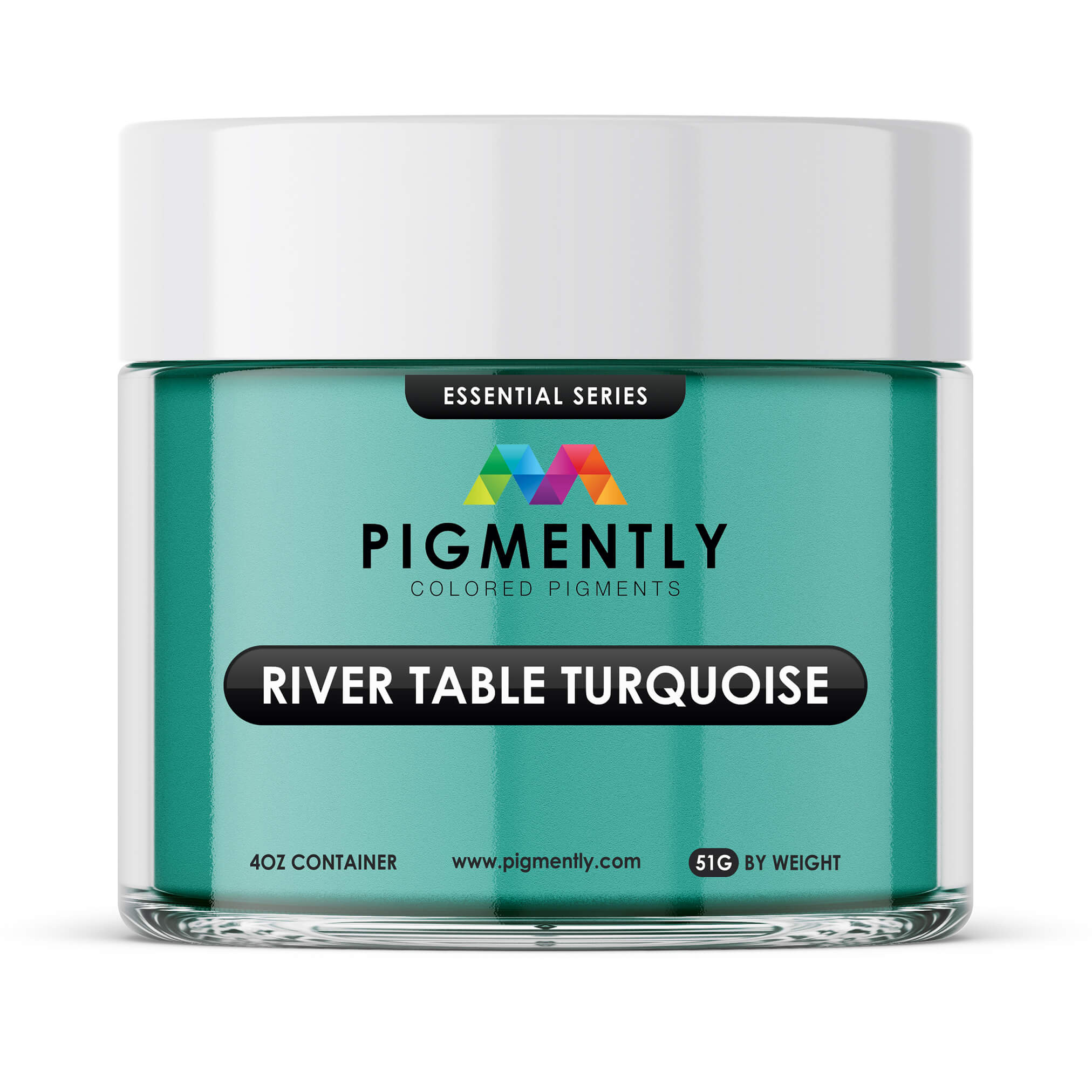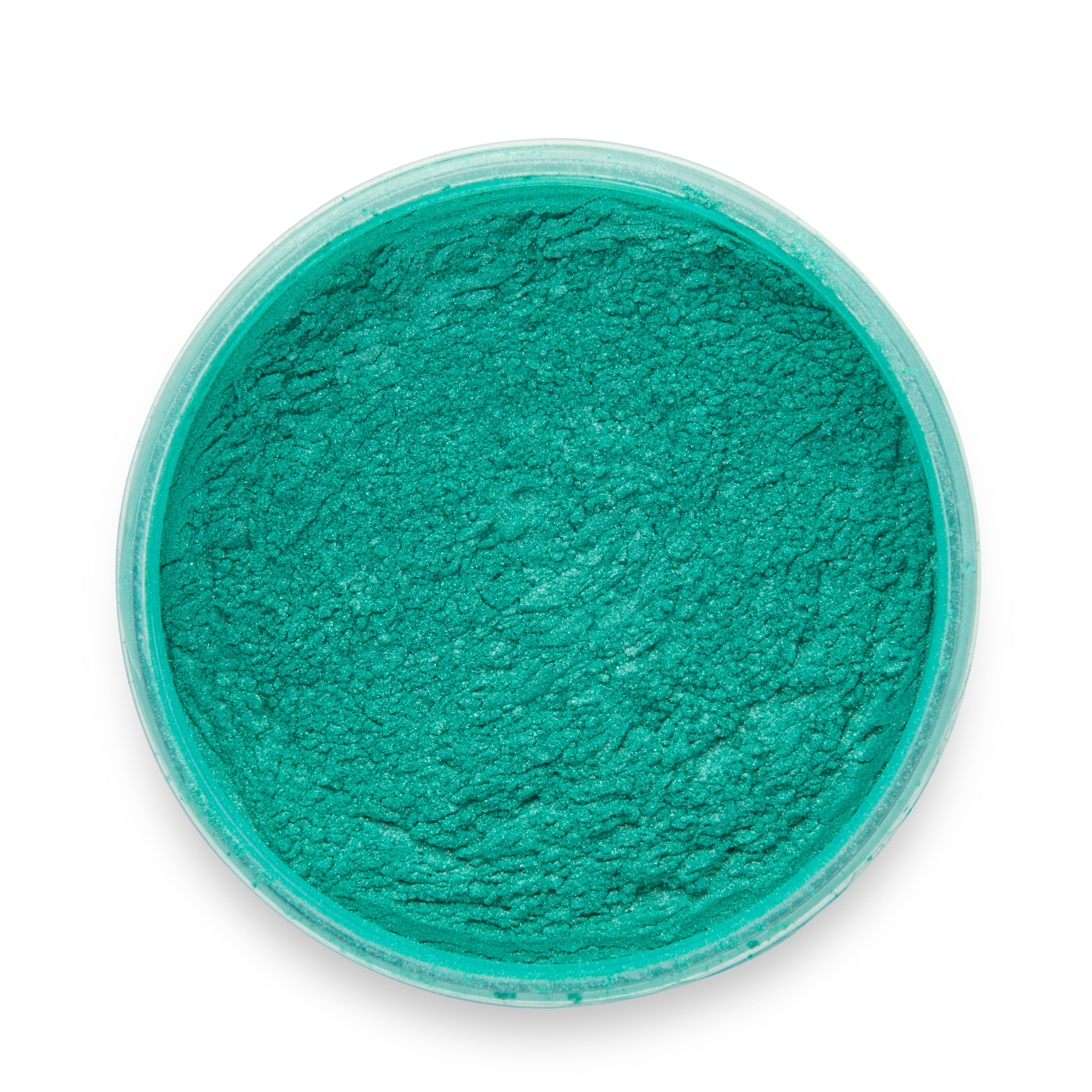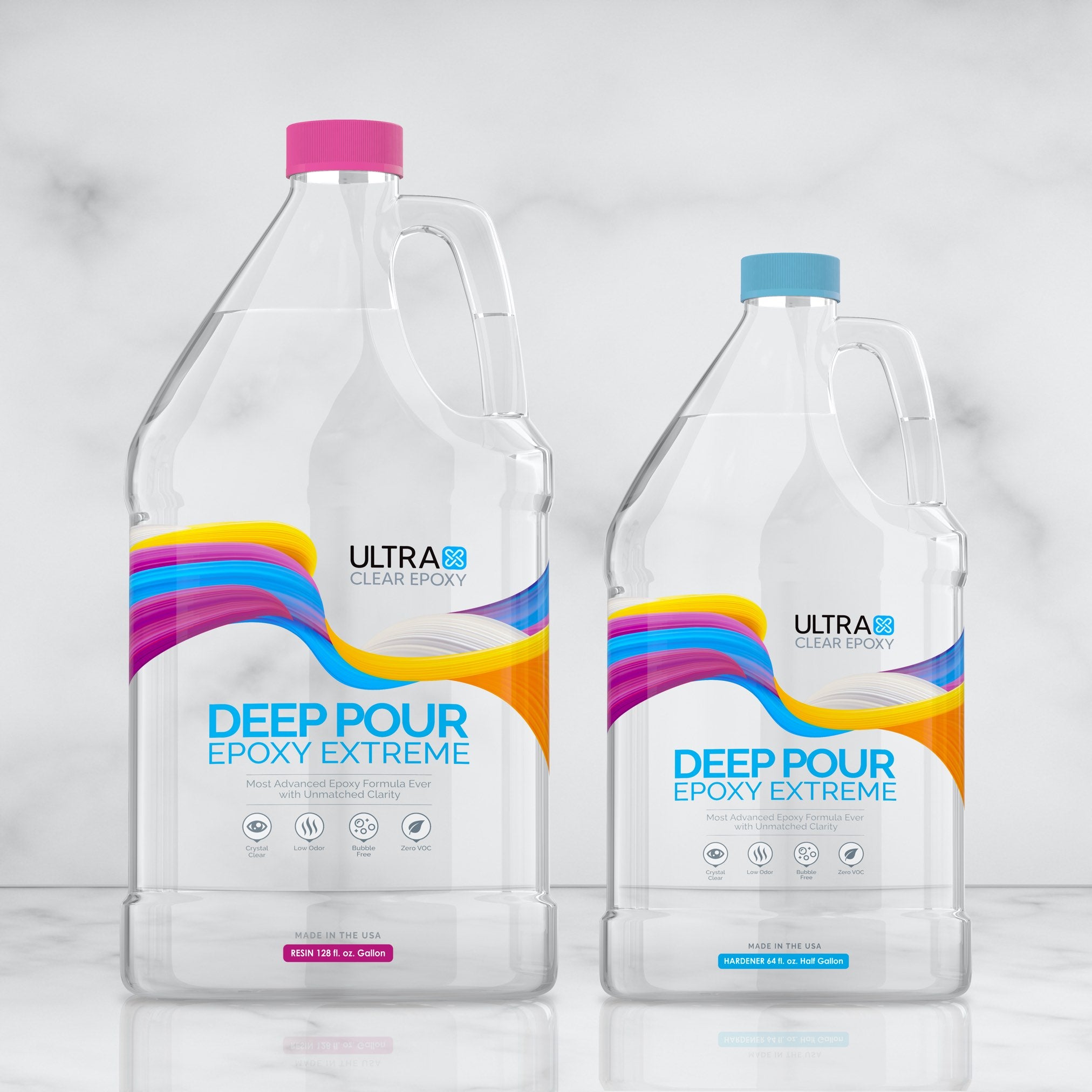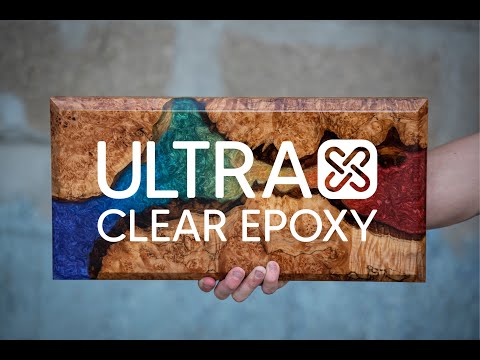For newer epoxy users, choosing the appropriate resin type may be a bit confusing. Each one has upsides and downsides, and knowing those will enable you to make the best decision when planning your resin project.
Below, we'll explain both the strengths and weaknesses of our two most common resin types: Our UltraClear Deep Pour Epoxy and our UltraClear Table Top Epoxy.
What are the differences between Table Top Epoxy and Deep Pour Epoxy?
Although once cured they look very similar, each epoxy is unique in the following ways:
- Natural consistency (viscosity) and coverage
- Working time (amount of time before mixed epoxy resin starts to harden)
- Hardness rating (measured under the Shore hardness scale when fully cured)
- General purpose (which applications they're most suited for)
Let's talk about each of those.
Difference #1: Natural consistency (viscosity) and coverage
Our Table Top Epoxy has a thicker consistency once mixed, similar to honey. When poured onto a flat surface, it will slowly spread out until it has self-leveled to 1/8 of an inch, this means the only thing you need to do generally is guide it as you pour to avoid missing any small gaps.
The key is to make sure you mix up a large enough batch to cover your substrate, as your coat will naturally finish at the ideal thickness for most tables, countertops, etc.
Some epoxy brands are marketed as table top epoxy, but will only self-level to 1/16 of an inch. We don't recommend these resins as a final coat as they provide a less durable finish.
If you do decide to use one of them, you'll likely want a second coat to bring your finish to the recommend thickness of 1/8 of an inch. This will provide a longer lasting, more durable result.
On the other hand, our Deep Pour Epoxy has a thinner consistency, allowing it to flow into cracks and crevices better (perfect for river tables), and enabling air bubbles to more easily escape from heavy pours.
The reason for this is because air is lighter than liquid and will naturally rise to the surface when under pressure. A lower viscosity rating is easier to pass through and won't prevent these bubbles from surfacing like table top epoxy could.
As a result, a single Deep Pour Epoxy layer can be up to 2 inch layers and still allow for full air bubble removal.
Deep Pour Epoxy is also what is known as a casting resin. It is excellent for filling silicone molds to make resin jewelry, keychains, and art.
Difference #2: Working time
Both resin types are two-part epoxies. This means they're stored as two separate components: resin and hardener. When the epoxy resin and hardener are mixed together, the epoxy begins to cure, gradually hardening.
Each epoxy has a working time—a short period after mixing during which it can be safely applied, usually through pouring, before it has to be left to cure.
Here are the working times of our Table Top and Deep Pour epoxy resins:
- Table Top Epoxy: About 5 minutes after mixing
- Deep Pour Epoxy: About 20 to 30 minutes after mixing
As you can see, this window is notably smaller for the Table Top Epoxy. The best thing you can do to prevent any mistakes is to read your epoxy instructions and learn each step before you begin the epoxy resin phase of your project.
Both of these times may seem short, but they're more than enough for pouring a single batch. You can then mix more up and continue the pouring phase.
Difference #3: Shore D hardness rating
Once fully cured, either table top epoxy or deep pour epoxy will provide a durable, hardened finish. However, we always recommend using table top epoxy for any project that might see heavy use or rough handling.
For deep pour projects, you can actually apply a topcoat of table top epoxy to the cured finish to give it that extra layer of extreme impact resistance.
In fact, our own Table Top Epoxy has been tested in its fully cured state and scored a hardness rating of 98 out of 100 under type D on the Shore hardness scale. That's a nearly perfect score!
This level of resilience is what makes table top epoxy ideal for high traffic locations such as bar tops, countertops, and tables.
Stay safe by staying informed.
Many epoxy resins only reach 75 on the hardness scale but claim much higher; that's why it's important to do a little research so you know you're getting what you pay for.
Our free ebook, The Ugly Truth About Epoxy Resin: What Companies Don't Want You to Know, discusses this issue and more, so that you can make informed decisions when shopping for epoxy resin.
Difference #4: General use purpose
If you’re just looking to cover a large surface, such as a flat wooden table top, you’ll want to use table top epoxy.
Our Table Top Epoxy is a single coat system that will cover virtually any surface in a 1/8 inch layer of resin. This is ideal for common materials including wood, marble, concrete, and laminate, and anything used for most countertops and table tops.
If you’re wanting to fill a void, encase objects, or connect multiple pieces of wood together to create a River Table, you should instead use our Deep Pour Epoxy. Because it can be poured in layers of up to 2 inches at a time, it's easier to embed sizeable objects as part of your project, leaving them neatly preserved and clearly visible through the epoxy's naturally transparent finish.
Many people also use it with silicone resin molds to create their own jewelry and other ornaments.
Where can you purchase these types of epoxy?
Many home improvement stores will carry at least one variant of epoxy, but they may not have exactly what you need, and what they do have might be lower quality.
You can find our award-winning Table Top Epoxy here and our Deep Pour Epoxy here.
Have questions? Want advice? Contact us!
Here at UltraClear Epoxy, we take pride in ensuring the quality of our products so you can get exactly what you need for your project.
Additionally, if you have any questions about epoxy resin or would like project planning assistance, please reach out to us. You can contact us via phone or email.
During business hours, you can also chat with directly with one of our epoxy experts by clicking the Help button at the bottom right of your screen.

